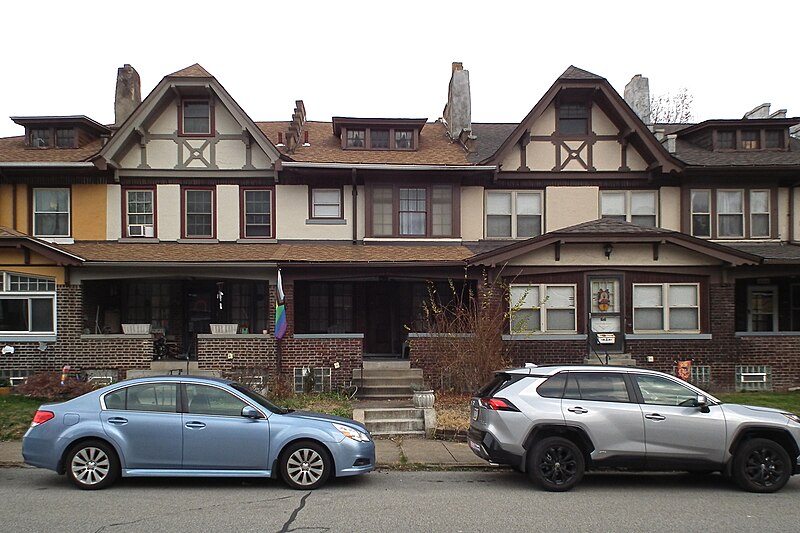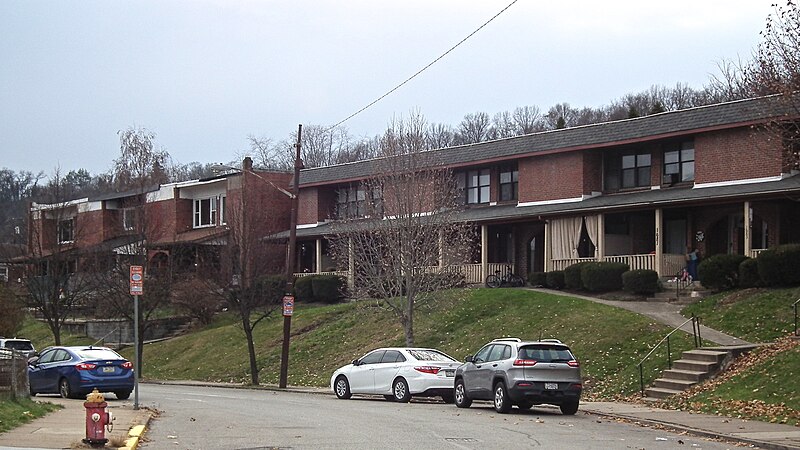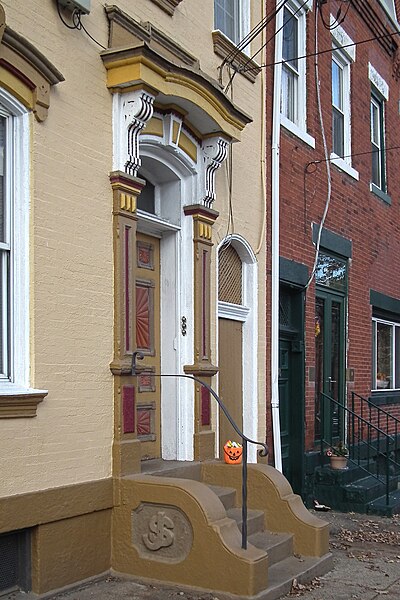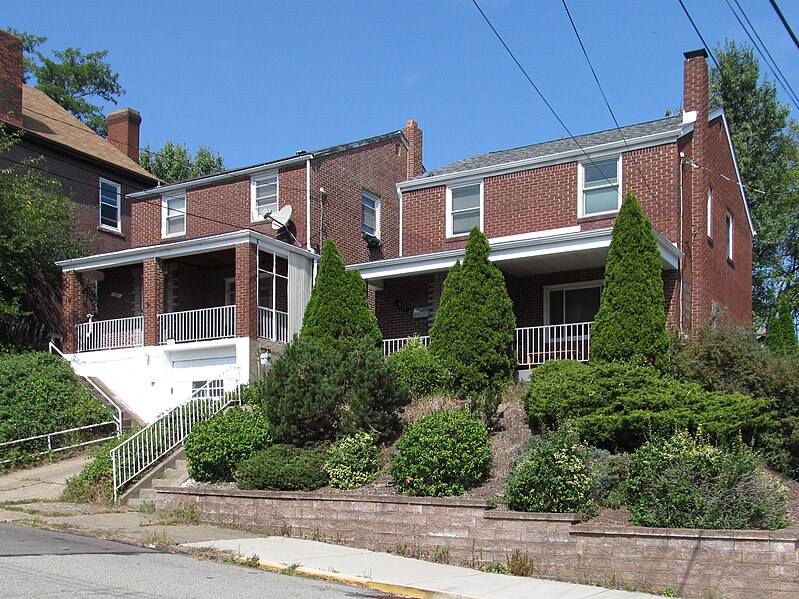
This picture was taken a year and a half ago, but it seems it got lost in the press of events, and Father Pitt never published it here. He went looking for it because he had just found the architects: research by the grandson of William Carpenter indicates that these houses on Kelly Street at Collier Street were designed by Carpenter & Crocker in about 1901. They were originally part of a larger group of 24 dwellings, but two other rows—one on Collier Street, the cross street, and one on the alley behind, Fleury Way—have vanished. The building on the corner was probably part of the original row; at any rate, it was in place by 1910, when a fire-insurance map shows a three-storey building here at the end of a row of two-storey buildings. It looks to old Pa Pitt like a hotel in the Pittsburgh sense: that is, a bar with rooms above to make it eligible for a “hotel” liquor license.
Two years later, Carpenter & Crocker would design St. James Episcopal Church, now the Church of the Holy Cross, just across Collier Street from these houses. Was the developer a member of the St. James congregation?






































